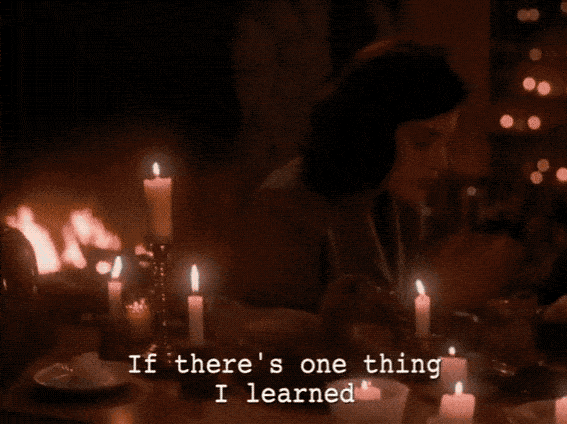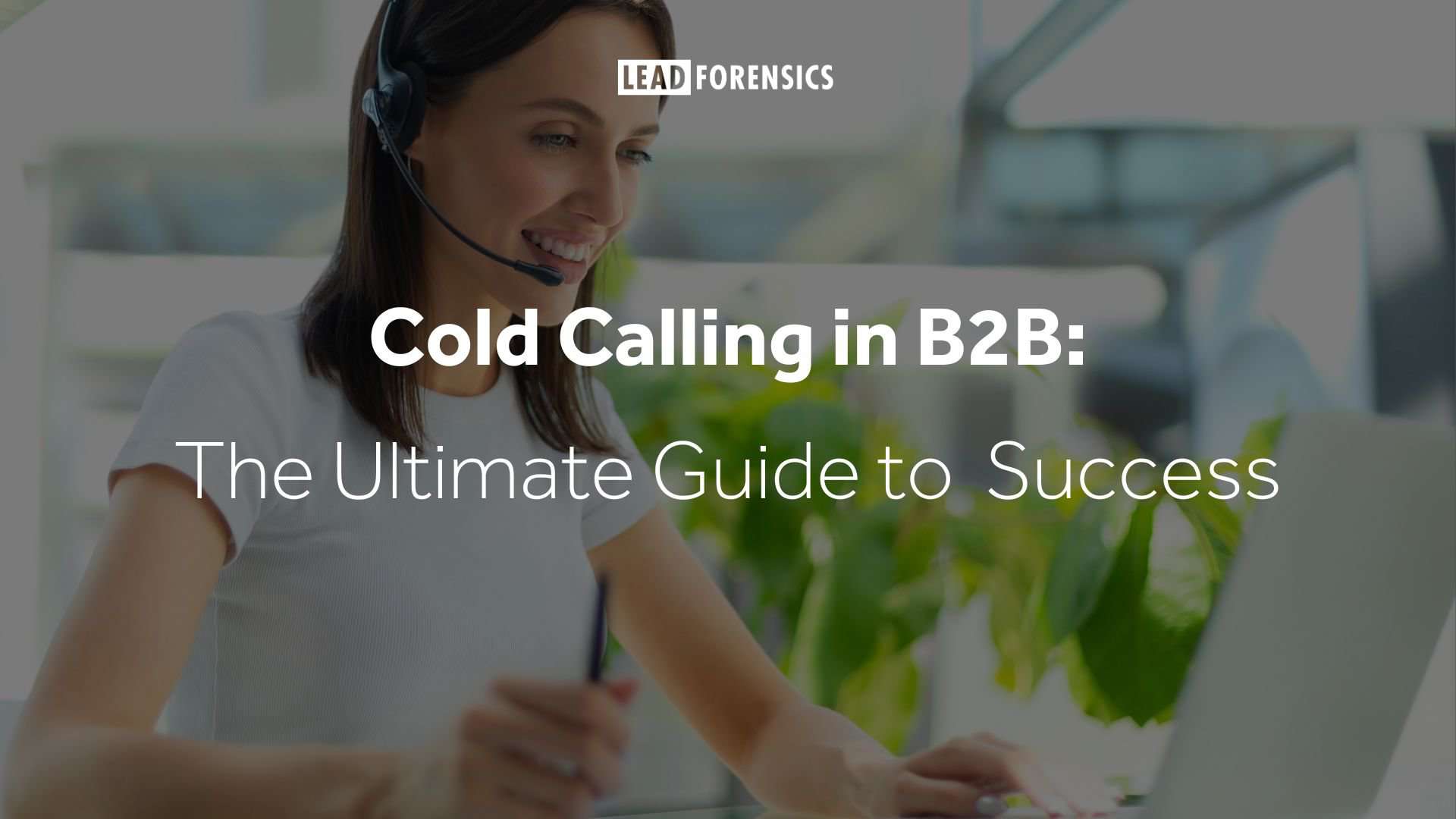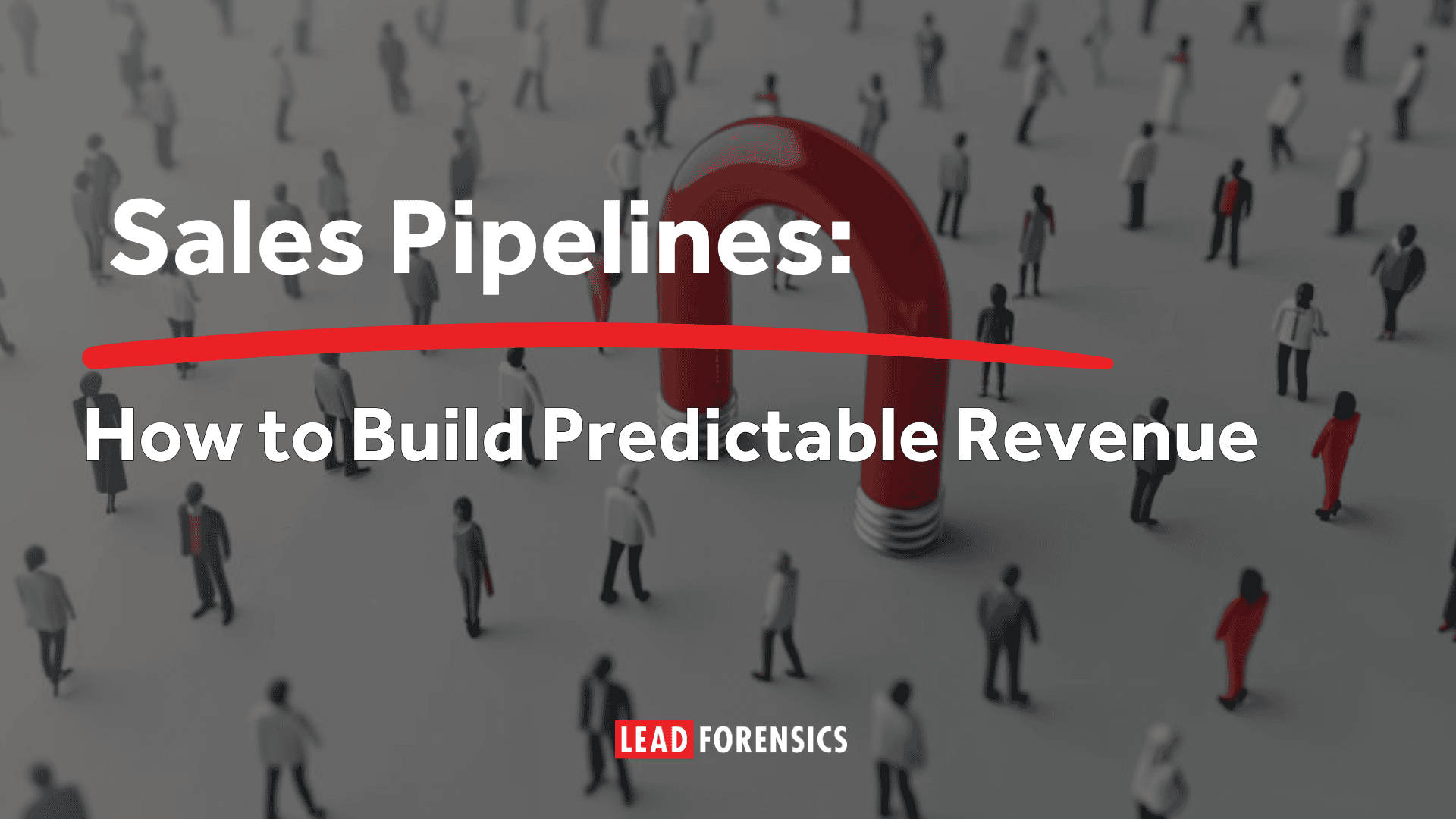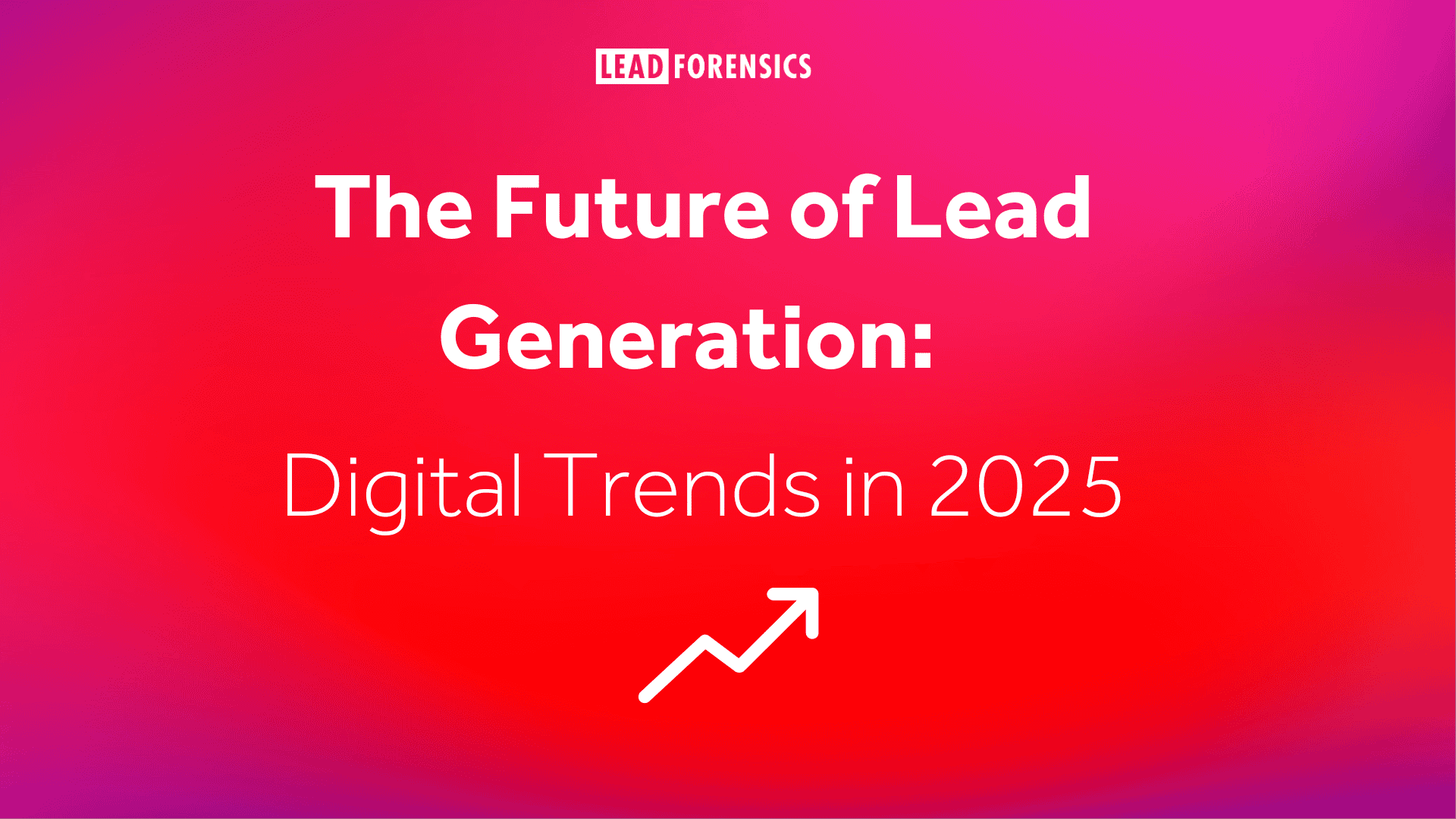What is B2B marketing?
B2B marketing is the promotion of products or services to business buyers using a wide range of techniques. Its goal is to improve lead quality, sales acceptance of leads and conversion rates.
The first step of B2B marketing is letting other companies know that your business exists and that you have a product or service which will benefit them. In addition to increasing brand awareness, B2B marketing gets companies interested in your brand, and nurtures prospects – with the goal of converting them into customers. Ideally, they will develop a valuable relationship with your brand for many years.
Because B2B products and services tend to be more complex (and typically more expensive) than those designed for consumers, developing long-term relationships is critical. While someone probably won’t care about relationships if they’re searching for the cheapest t-shirt, if they’re considering a long-term investment in something like manufacturing equipment, choosing the right partner is vital.

Many B2B marketers use traditional strategies, like attending trade shows or employing a team of sales reps, to build and nurture these key relationships. Combining those strategies with digital tools helps them market to many businesses without losing their personal touch – it’s the best of both worlds.
What is the difference between B2B marketing and B2C marketing?
B2B marketing and B2C (business-to-consumer) marketing differ in many ways. B2C and B2B marketing differ in their respective strategies and applications, as well as in their audiences and how they communicate to them.
B2B marketing targets the needs, interests and challenges of individuals or groups who are making purchases on behalf of their organization (rather than for themselves), so the organization is the customer.
B2C marketing targets the needs, interests and challenges of individual consumers who are making purchases on behalf of, or for, themselves, so the individual is the customer.
What is the B2B marketing process?
To summarise the process buyers go through, remember the AIDA model – Attention, Interest, Desire, Action.
Not only does it represent the stages a customer goes through before purchasing, but it also helps to form a B2B marketing strategy around the key phases of the buying process.
Attention

To attract attention, you need to be visible on popular search engines. In fact, it’s estimated 71% of B2B research starts with a search on Google. So, it’s safe to say search engine optimization (SEO) is one of the most critical aspects of your B2B marketing strategy.
Interest
To increase interest in your products and services, it’s important your organization is aligned to meet the needs of your customers.
You need to analyze what makes you different from your competitors. Once you’ve established your unique selling points (USPs), it’s all about reinforcing this positioning with strong and tailored messaging.
Desire
Demonstrating your product or service benefits your potential customers is crucial.
After establishing benefits for the buyer, the next step is to let your target audience know you’re perfectly suited to meet their needs.
Testimonials, reviews, and satisfaction surveys are all qualitative methods that effectively demonstrate your competitive advantage over your competitors.
Action
The final (and most rewarding step) is to be clear about what action you want the buyer to take.
Clear call-to-actions are essential to a successful B2B marketing strategy. Often, it’s the difference maker when converting potential customers.
Start by analyzing your content and defining the purpose of each piece. Let’s use a case study as an example, do you want users to download the content, or do you want someone to make an inquiry?
Now that you know the desired outcome for each piece of content you can create a compelling call-to-action that is irresistible to potential customers.

B2B marketing strategies
On-site and off-site Search Engine Optimization
You want to be discovered quickly by prospects as they search the Internet for someone to help them alleviate their pain points. Your Search Engine Optimization (SEO) strategy needs to consider on-site tactics that leverage specific keywords within your website.
Additionally, consider using off-site strategies through links in outside articles or social media posts that point back to your website.
In-depth market research
Research helps you understand your clients, their needs, the environment that impacts those needs and how any competition might pose a challenge to your efforts.

Use multiple research sources to cover all aspects of research, including studies from research firms, academic research, industry, and government findings, interviews, social media content, and more. Create reports that use tools like a SWOT analysis, PESTLE and other visual tools that explain your findings.
Social media for lead generation and engagement
Social media is not just a place for consumers. More businesses are using social media to connect with colleagues, consultants and vendors. You need to be on these social media sites, joining in discussions, following your target audience and sharing your solutions.
From review sites to professional social networking sites like LinkedIn to previously consumer-focused channels like Facebook, YouTube, and Instagram, you’ll find more prospects here than in many other online environments.
Niche-focused perspectives
Your target audience is more likely to spend their money with companies that make them feel unique and give them personalized attention. And you want to differentiate yourself from the competition.
That makes niche targeting and market positioning strategy critical to successful B2B marketing. Find an area where you can provide a specialized solution and experience for your prospects.
Use content channels like your blog, industry blogs, speaking events, webinars, podcasts and article syndication to develop yourself as a thought leader in your niche. Share this content across channels to maximize awareness and coverage.
Referral B2B marketing
Look to your professional network to see where you can get a boost from those who trust what you do and can share your solution with those in their network and beyond.

These referrals can deliver a significant increase in credibility and reach.
Customer Relationship Management
Customer Relationship Management (CRM) is a system that combines database management capabilities with data insights about your customers and prospects. Some of our favorites include Insightly, Agile CRM,and Pipedrive.
This in turn can inform both your B2B marketing and B2B sales efforts. You can more effectively track what your customers are doing and when they buy, what drives purchases, what makes them unique and when to follow-up, so you can personalize and target more effectively.
Website visitor tracking
Companies put a great deal of their budget into creating, maintaining and driving traffic to their website – as they should. Your website is often the first interaction prospects have with your brand when it comes to B2B marketing, so ensuring they make a good first impression is important.
Once they land on your site – what’s next? They inquire of course – they leave you their contact details and you can start prospecting to them! Unfortunately, on average only around 2% of your visitors will inquire without website visitor tracking. So, what happens to the other 98%?

With tools like Lead Forensics, you can get accurate contact details of the business on your website, even when they don’t enquire. Want to know more? Book your demo here!
Which B2B marketing channels should you use?
The wide range of B2B marketing channels continues to grow year after year, so it’s easy to get overwhelmed.
Email B2B marketing
Email marketing is an effective way to build and maintain rapport with potential clients. But unlike email marketing for B2C retailers, B2B email campaigns focus on providing information and building relationships.
Instead of highlighting products and sales, you can offer your subscribers insight, tips, and other information relevant to your industry with this B2B channel. And as your readers progress through the sales funnel, you can focus on how your company can help them solve specific problems or achieve certain goals.
If you’re new to email B2B marketing, you can begin with a weekly or monthly email newsletter. Your newsletters should be easy to read, informative, and regularly scheduled.
Pay-per-click (PPC) advertising for B2B marketing
Pay-per-click (PPC) is a popular B2B marketing channel that allows marketers to bid for placement in a search engine’s sponsored links.
With PPC, you bid on the keywords you want to trigger your ads. If your bid is among the highest, your ads will appear above organic search results. And as the name implies, one of the biggest benefits of PPC for B2B businesses is that you only pay when a user clicks your ad and visits your website.
PPC is extremely beneficial if you’re looking to quickly boost traffic to your website because it can start attracting traffic and leads as soon as you launch a campaign. It can also help you maintain a presence in search results while you work to earn organic rankings.

Content B2B marketing
Content marketing is a great B2B marketing channel and one of the most effective ways to reach new leads online. It involves creating original articles, infographics, blog posts, guides, and eBooks. You can also create and share visual content like photos and videos.
Custom content helps people learn more about your business, industry, and services. It can also position your company as a leader in your field, and people will be more likely to want to learn about your services if they read a helpful piece of content you created.
If you’re new to content B2B marketing, you can start by creating a blog. You can use your blog to write about industry trends, helpful tips, and anything else your target audience may find interesting. Even if this content doesn’t immediately generate leads, it will be useful to a B2B prospect who may need your products or services in the future.
Conversion rate optimization (CRO)
If you want more visitors to convert on your B2B website, conversion rate optimization (CRO) can help.
CRO involves testing elements on your website to see which versions result in more conversions. For example, you can test multiple versions of a call to action button, with different colors or phrasing, and see which version generates the most clicks.
Testing and optimizing various elements of your website can help you get the most out of your web traffic, and ultimately earn more revenue for your company.
Webinars
Webinars are one of the newest ways to reach and engage with audiences online, and they’re increasingly popular among B2B marketers as a B2B marketing channel. Hosting a webinar gives you the chance to present information, and it gives you the opportunity to engage with potential clients in real-time.
You can also publish your webinar on your site when it’s over, and offer it as a resource for your visitors. This means you have the chance to generate traffic and leads from a one-time event for years to come.
Webinars can be either audio-only, or in video format. Audio webinars may or may not include visual aids like screenshots, slideshow presentations, or examples of data to back up the speaker’s points.
Video webinars are great for presenters who are comfortable on camera, and they’re also great for demonstrating a physical product or showing the benefits of a service.
Influencer B2B marketing
Influencer B2B marketing connects companies with clients through the influencers they follow. This typically happens through a celebrity or social media influencer promoting a company, product, or service.
Marketing through influencers has been around as long as celebrities have, and it is not a strictly digital channel to market through.
That said, influencer marketing is as strong, if not stronger, than ever. It works because influencers are not only known, liked, and trusted by a great many people. They also represent ideals that many of their viewers aspire to. This is especially true of professional athletes.
Once a company discovers which influencers appeal to its target audience, they strive to deploy a successful outreach marketing strategy. When the company connects with the influencer, compensation and expectations are established.
Influencer outreach is powerful and desirable because of its impact on the bottom of the funnel strategy. For example, a relatively unknown company that’s struggling for sales can see a large influx of revenue online overnight through an intelligently executed influencer marketing campaign.
Thank you
Thank you for reading our latest best practice guide on our B2B Marketing Blog – “B2B marketing explained: what is B2B marketing?” We publish fresh content every week, so please subscribe for alerts, or come back again for more.
In the meantime, you may be interested to read “Growth Hacking: 11 Marketing Strategies”
And, if you’re interested in knowing who is visiting your B2B website, you can request a demonstration of Lead Forensics here.








